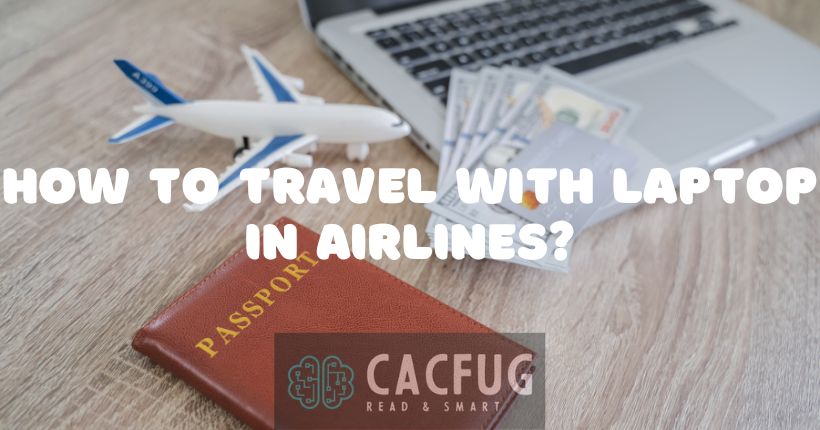Traveling with a laptop can be crucial, whether for work, entertainment, or personal tasks. Ensuring its safety and ease of use during flights is essential for a smooth travel experience. However, air travel introduces certain challenges for laptop users, such as navigating security checks, protecting against physical damage, and managing power needs. In this guide on how to travel with a laptop in airlines, we’ll cover essential tips for a stress-free journey.
Preparing Your Laptop for Air Travel
Before flying, back up important files to prevent data loss in case of damage or misplacement. Options like cloud storage services (e.g., Google Drive, Dropbox) and external hard drives offer convenient and secure solutions, ensuring data remains accessible even if the laptop encounters issues.
Protect sensitive files by encrypting them and using strong passwords. These security measures add an extra layer of protection if inspections require temporary access to your laptop. This is especially important for business travelers carrying confidential information.
Packing Your Laptop for Airline Travel
Selecting a padded, laptop-compatible bag is vital to protect your device from potential bumps and falls. Look for features like water resistance, dedicated laptop compartments, and shock absorption. Options like Missnine Bags, Asge Backpacks, or VSNOON Backpacks offer these qualities, providing peace of mind during your journey.
Use a separate pouch for chargers, cords, and adapters to keep things organized and accessible. Having your laptop and accessories arranged in an easy-to-reach area will also help during security checks, allowing for a smooth process.
Navigating Airport Security with Your Laptop
Security screenings often require laptops to be removed from bags. Keeping your laptop in an accessible compartment allows for quick removal, saving time and hassle at the checkpoint. Understand global requirements, as some countries may have specific procedures or restrictions on electronics.
To streamline security checks, have all electronics ready for inspection. Follow liquid restrictions and pack any liquids separately. Being organized reduces delays and keeps your belongings secure.
For frequent flyers, TSA PreCheck can expedite security processes. With PreCheck, you may not need to remove laptops, making it a time-saving option for those traveling often.
Managing Your Laptop In-Flight

Bring your laptop fully charged and use power-saving modes to conserve battery. Some flights offer in-seat power options, so check with your airline to see if charging is possible and plan accordingly.
To comfortably use your laptop in a confined space, consider space-saving techniques like placing it on your lap or a compact tray table. Maintain a good posture to avoid strain, and be mindful of others to ensure a respectful experience.
Connecting to in-flight Wi-Fi can expose your data to security risks. Using a VPN is essential for securing your connection, especially for business tasks. Additionally, turn off Bluetooth to prevent unauthorized access.
Handling Your Laptop After Landing
Once you retrieve your laptop from carry-on, inspect it for any damage or operational issues. Doing this immediately ensures you can address potential problems quickly.
In crowded areas or while in transit, be vigilant about your laptop’s safety. Keeping it close to you and in a secure bag minimizes the risk of theft or accidental damage.
Many airports provide charging stations or lounges. Take advantage of these to ensure your laptop is ready for further use.
Special Considerations When Traveling Internationally
Customs requirements vary by country, with some nations requiring additional checks on laptops or software content. Familiarize yourself with specific rules for each destination.
International travel often requires power adapters or converters for different outlet types. Check the country’s outlet specifications and bring compatible adapters to avoid charging issues.
Business travelers may carry sensitive data, making additional security measures crucial. Using a secure business laptop ensures data protection and adheres to company policies on information security.
Frequently Asked Questions (FAQs)
To ensure a smooth journey, here are answers to some commonly asked questions about traveling with laptops.
Can I Bring More Than One Laptop on an Airplane?
Most airlines allow multiple electronic devices, but it’s best to check with the airline in advance, as some may have specific restrictions.
Do Airlines Allow Charging Laptops During the Flight?
Many airlines now offer in-seat charging, though availability varies by airline and aircraft type. It’s wise to bring a fully charged laptop and confirm power availability with the airline.
What’s the Best Way to Protect a Laptop from Damage During Travel?
A well-padded, laptop-compatible bag provides the best protection, especially models designed for travel. Secure the laptop in a dedicated compartment to minimize movement.
Endnotes
Traveling with a laptop in airlines doesn’t have to be complicated. By preparing thoroughly, choosing the right travel accessories, and following security protocols, you can enjoy a stress-free journey with your device. Safe packing, protecting your data, and understanding airline policies are all essential steps for protecting both your laptop and your peace of mind. Whether you’re traveling for business or leisure, these tips will help ensure a smooth and secure journey.





